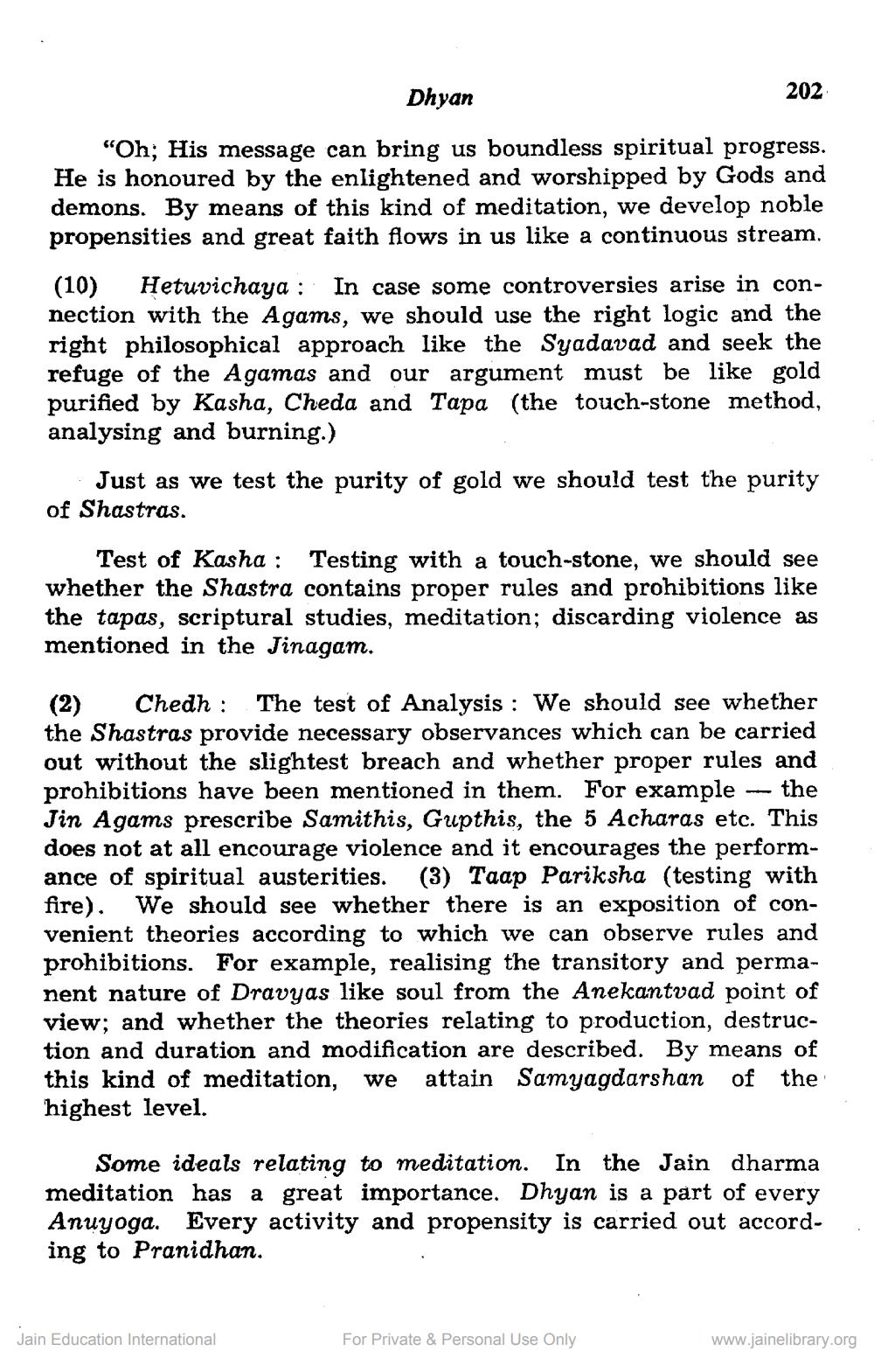________________
Dhyan
"Oh; His message can bring us boundless spiritual progress. He is honoured by the enlightened and worshipped by Gods and demons. By means of this kind of meditation, we develop noble propensities and great faith flows in us like a continuous stream.
202
(10) Hetuvichaya: In case some controversies arise in connection with the Agams, we should use the right logic and the right philosophical approach like the Syadavad and seek the refuge of the Agamas and our argument must be like gold purified by Kasha, Cheda and Tapa (the touch-stone method, analysing and burning.)
Just as we test the purity of gold we should test the purity of Shastras.
Test of Kasha: Testing with a touch-stone, we should see whether the Shastra contains proper rules and prohibitions like the tapas, scriptural studies, meditation; discarding violence as mentioned in the Jinagam.
(2) Chedh : The test of Analysis: We should see whether the Shastras provide necessary observances which can be carried out without the slightest breach and whether proper rules and prohibitions have been mentioned in them. For example the Jin Agams prescribe Samithis, Gupthis, the 5 Acharas etc. This does not at all encourage violence and it encourages the performance of spiritual austerities. (3) Taap Pariksha (testing with fire). We should see whether there is an exposition of convenient theories according to which we can observe rules and prohibitions. For example, realising the transitory and permanent nature of Dravyas like soul from the Anekantvad point of view; and whether the theories relating to production, destruction and duration and modification are described. By means of this kind of meditation, we attain Samyagdarshan of the highest level.
Some ideals relating to meditation. In the Jain dharma meditation has a great importance. Dhyan is a part of every Anuyoga. Every activity and propensity is carried out according to Pranidhan.
Jain Education International
For Private & Personal Use Only
www.jainelibrary.org




